
Illustration: “The Earth” (Zemliia)
Painting by Bohdan Pevny, 1963, dedicated to the memory of the 1933 famine in Ukraine.
By Pegi Eyers, Unsettling America
We as Settlers have abandoned the land. We have successfully walled ourselves off. The wind is something that howls outside, the rain bangs on the roof, the snow is an inconvenience that needs to be shovelled away. The scents of spring blossom outside our sealed windows as we walk throughout our days on floors that were once magnificent forests. We complain about the weather, and the so-called “perfect” sunny days are just a backdrop to activities that further our appearance, our ego, our need for acquisition, and the diligent daily machinations of capitalism we enact to perpetuate the goals of Empire. And even though we have insulted Mother Earth in every way possible, she still nurtures us by providing the green growing things that end up in our tomb-like refrigerators, plastic packages, non-recyclable bottles and sealed cans.
And away out on the land, nothing human is moving, because nothing human is there. We as Settlers manage the land and leave the alterations and artifacts of our passing, but we have no interest in actually placing our frail and delicate bodies in natural spaces. From a bird’s eye view, houses sit like lifeless monoliths on the denuded landscape, with the occasional tiny human scurrying from car-pod to dwelling and back again. The creatures of the air have these ravaged territories to themselves – as does every animal, reptile and insect fully embodying their indigenous knowledge through all the vagaries of atmosphere, light, scent, burrow, and ground beneath their feet. Blocked in by grids of roads traversed by death-dealing machines – the real life, the true life of Turtle Island keeps thriving to the best of its ability and authentic to its song.
Yet not all Settlers are oblivious to the call of the wild and the potential for indigenous knowledge. Across all demographics and beyond all expectations contemporary movements1 are flourishing that share “decolonization” hesitantly with Turtle Island First Nations activists and scholars, who maintain ownership of the term.2 However, if the most important activity of decolonization is rejection, a refusal to participate in Empire any longer, we must unsettle our core beliefs as we transcend the legacy of colonial identity, replace external authority with community, stop scarring the land, and begin to live as earth-centered peoples once again. Along with a self-guided critique of Settler-Colonialism in all of its misguided and toxic glory, we must confront the interloper and examine our status on the land. How do we re-inhabit these places called “Canada” or “USA,” the ground of our being? Mother Earth is counting on us to get it right.
“Before the white man could colonize anyone else, he had to colonize himself. And so, before he can truly stand beside anyone else to confront the tasks of decolonization and resurgence, within, against, or outside of the dominant order, he must attend to his own decolonization at the level of both the individual and the community.”3 (Richard J.F. Day)
Facing environmental degradation, imminent collapse and massive change, the reality of our predicament sets in and monumental questions continue to arise. How deep is the colonization in our souls? In our minds? What is delusional and what is real? As we move away from Empire, what is our level of commitment? This is the Settler conversation. To completely decolonize can we truly reject all that does not serve the earth, like resource extraction and exploitative economies, and to fully understand that capitalism is a brutal, fascistic system that kills millions of beings physically and millions more spiritually? And as we have normalized it for centuries, does “white” have to equal the juggernaut of Empire and modernity? The answer, emphatically, must be NO. As Tim Wise articulates, “white is to dream of different ways to live in this skin”4 and Winona DaDuke reminds us that “you can have a worldview that is not based on Empire.”5
When we finally wake up from the ongoing amnesia and distractions of urban life, the first thing we notice is that Empire does not promote sustainability, reciprocity, respect, or gratitude for the land. How we could have turned our back on natural law in the first place is an indescribable act of arrogance and stupidity. What could possibly be worth it, to situate ourselves outside of our own ecology? What hubris or terror or dementia provoked us to flee the garden? How did we shift from the “we” of the primal matrix to the modern “me-me-me” of the hypertrophied ego? Our emphasis on the importance of the human-built, monolithic, techno-political, money-centric world, and our incestuous interaction with the technologies and systems of our own making, has created a parasitical existence that demeans both humanity and the Earth. Western culture has reached an all-time apogee of disconnect from the web of life – the bedrock of our being – and the elements in the natural world that sustain our very lives. The hubristic unsustainable worldview of the imperialist machine has naturally led indigenous people to believe that Settlers are incapable of bonding with the Earth, and we need to prove them wrong.
“They may see it as beautiful, or exploited, or crowded, or expensive, or hostile, or even as a haven for racism, but they cannot ever see our land as familial. That is to say, non-Natives can never know what we know, or feel what we feel, about our Mother, the land.” 6
(Haunani-Kay Trask)
“It is impossible for non-natives to feel the sorts of emotions that are called upon when indigenous peoples speak about ancestors, about Earth, about the symbiosis that exists between human and animal. Non-natives come from another psychic and physical place, and we have been here for centuries.”7 (Beth Brant)
“Settlers cannot have the same deep connection that First Nations have to the land that is tied to language and cyclical ceremonies, an understanding of the whole ecology and a feeling of deep responsibility.”8 (Ethan Baptiste)
“Settlers suffer from alienation from this land, and fundamentally, their own selves; Settlers have not yet rooted themselves and been transformed into real peoples of this homeland.”9
(Taiaiake Alfred)
“As a society North America does not have the sense of land that Native people do. North American societies simply see land as a commodity – what you can take from it and what you can do with it. Certain individuals may have a different perspective on land and I am happy that is true, but in terms of provincial, state or national policy land is a commodity.”10 (Thomas King)
How disheartening to find that our First Nations neighbours think that members of the Settler Society have absolutely no respect or affection, let alone biophilia, for the land! There are many among us who honor the Earth in all we think, say and do, yet there needs to be a groundswell not only of nature-lovers, but a major paradigm shift to knowing the land as “family” and placing Earth Community at the center of our lives. To be sure, there are concrete steps each of us can take to break our bad habits of compartmentalizing and ignoring nature, living behind the barricades and closed doors of urbanity, and most of all, to undo the insanity of our humancentric superiority. Beyond the toxicity of the industrial world, each one of us still has the capacity for a deep and abiding love for the Earth, and re-awakening this primal connectivity and reclaiming eco-mind is our best future. We desperately need to restore ourselves as bonded to the land, to recover the deep knowing that the biome is part of us, and that our bodies resonate with the energies of the Earth! Each one of us is gifted with the archetypes, elements and intricacies of nature at the moment of our birth, imprinted with ions of air, fire in the form of energy from the sun, and especially with the life-giving waters. The molecules of local watersheds are virtually found within our bodies (!) and the building blocks of organic matter such as carbon, oxygen and nitrogen form the Earth and all living beings. Turtle Island is the Great Creatrix and birthing house for all the diverse peoples who now share the Americas, yet the short tenure of our roots in these lands will always be preceded by the much deeper attachments of the original First Nations.
Certainly, our follow-through as Settlers is to re-land ourselves, but genuine indigenous status means having deep roots that give rise to fully-formed lifeways and indigenous knowledge (IK), and belonging to “ancestral land” means that many generations have come and gone, to mark their collective psychic and physical presence on the land. But by virtue of our Beloved Dead and the Settler Spirits that inhabit our own psychogeography, how many generations does it take to establish indigenity? This is the monumental question at the very heart of every dialogue in every sphere, and a contentious issue for ongoing debate. According to renowned author Leslie Marmon Silko (Laguna Pueblo), indigenity is quantified by having at least a thousand-year presence in a specific place.11 We must concede that Settlers do not fit the UNDRIPS definition of “indigenous”12 (which is the only one that counts) and it is a deceptive Settler Sidestep to declare “nativization” or claim “indigenous status.”
The issue of Settler tenancy will not be resolved in our lifetime, yet our white privilege leads us to consider “quick fixes” such as asking this popular question. Are Europeans to be “persona non grata” forever? In an era of flourishing cultural pluralism, will impatient Settlers or First Nations leaders and academics13 just go ahead and answer the question? Or maybe, just maybe, for the willing and the worthy, the land itself will offer up an answer. Attempting to hold this inner and outer ambiguity successfully, our motherlines and fatherlines still fan out behind us, with up to eight (or more) generations of interlopers being born on Turtle Island. So here’s a suggestion. Perhaps the best approach to take (and the most ethical) is to acknowledge that dedicating the bones of our Ancestors to the soil makes us responsible to that land. Our lives are intertwined with the Great Heart of Turtle Island who gave us life, and our sacred companions and kindred spirits in Earth Community also hold us close when we are gone. The bottom line for Settlers (and all folks for that matter) – must be this. How can we say we have lived properly without “returning the favour,” for caring for the sacred Earth Mother who has cared for us?
Looking at how the colonial project continues to mount up, it seems that for most Settlers a positive status on the land is something we are still working on. In times of urgency, moving forward must mean educating our white cohort, working hard at rejecting the ecocidal values of patriarchal imperialism, losing the humancentric “cult of the individual,” reclaiming ecocentric community with the Web of all Life, and working tirelessly at preserving nature for nature’s own sake. We need to do this work without validation from our peers or receiving permission, as the higher powers and Mother Earth herself are urging us on. Like our European ancestors before us, we can look to the timeless cycles of nature, the journey of the moon across the sky, the solstices and equinoxes for our rites of passage, and for the new/old ceremonies that have deep roots and relevance for us today. To restore our world, we need to stay in one place, sink our roots deep, learn about local history, and get to know the creatures of the air plus the animal, reptile and insect families who thrive in our shared territory. We all play a part in supporting healthy, living food systems and growers committed to ecological practices, to create more of these systems, and to reclaim our sacred relationship with place, food, soil and community. Re-landing the Settler means healing our disconnect from the natural world, tearing down the walls of separation, and become caring stewards of the land. Those who love the land with all their heart and soul are the true Earthkeepers regardless of origin, and you cannot destroy that which you love!
Coming full circle to heal our foundational relationships with Turtle Island First Nations, Rejecting Empire cannot happen without acknowledging indigenous rights to self-determination, honoring the treaties, putting retribution before reconciliation, supporting FN cultural reclamation, and performing solidarity work to protect indigenous sovereignty and the land. If sustainable local community partnerships, ecological remediation or peaceful co-existence happen at the First Nation/Settler interface we can celebrate our work and be grateful, as these are values that all people can share. As Settler Allyship with indigenous resistance movements continues to grow (our “co-existence through co-resistance”14) so will the many questions and contradictions, and the myths, memes and master narratives of our civilization continue to be exposed. Empire is the enemy we all face, and as our actions for social and environmental justice expand, so does the imperative for mutual decolonization. We are not agents of capitalism or homogenous nation-state “consumers” – we are Treaty People, each a sovereign cultural group with rights and responsibilities, and it is time to become honourable partners to each other and the land.
Our status as Settlers is to return to the original values of embracing our bonds to Mother Earth, to write our old/new eco-story, and to be at one with wild nature as an interconnected part of the flourishing of all life. As we fulfill the directives of balance and right relationship – the goals of decolonization – we will realize the highest values for all those on Turtle Island, which is to participate in the beauty of Earth Community and to protect the land for the Seven Generations yet to come.
We are all Ancestors of the future, and this is how Ancestors live. Learn the Old Ways of your people and find or adopt a piece of land to love with all your heart. Re-embrace your true home and become empowered to hold space for decolonizing community to arise. Carve out a natural lifestyle, listen to what the Earth is telling you, and form bonds of resistance in solidarity with the original Earth Keepers of the land. Live in harmonious and sustainable ways on the land, celebrate and honour the land, and praise the land. Create the ceremonies, rituals, artistic expressions, songs and dances that express your own heritage and convey your interaction with the spirits of the land you love. Practice the sacred activities that dovetail with the cycles and the Great Wheel of the Year on the land. Plant when it is time, harvest when it is time, rest when it is time, and respect the living things – the plants and animals that have given their lives for your existence. Practice reciprocity and honour all beings, write and tell the stories when it is time, and prepare the soil when it is time. Root your heart to the earth where it can stay strong, stay your face to the moon, your skin to the sun, your hands to the soil, your eyes to the beauty of nature, your heart to the creatures, your wonder to the interconnectivity of it all, your gratitude to the Great Heart of Turtle Island, and your soul anchored in the deep dreaming of the land that will hold you in loving embrace throughout your long revolutions of birthing, living, dying and being born to live again.
—
Notes
1. Contemporary movements to Reject Empire and reclaim earth connectivity are exploding through diverse networks such as Transition, Resilience, Bioregionalism, Permaculture, Rewilding, Primitivism, Green Anarchism, Deep Green Activism, Rites of Passage, Slow Movement, Post-Peak Living, Ecopsychology, Deep Ecology, Spiritual Ecology, Nature Mysticism, Pantheism, Animism, Earth Rights, Green Politics, Neo-Paganism, Polytheism, Druidry, Reconstructionism, Humanism, Transformational Culture and Matriarchal Studies. There are also over 2.5 million organizations working toward ecological sustainability and social justice on the planet today.
2. Eve Tuck and K. Wayne Yang, “Decolonization is Not a Metaphor,” Decolonization: Indigeneity, Education & Society, Volume 1, No.1, 2012.
3. Richard J.F. Day, “Angry Indians, Settler Guilt, and the Challenges of Decolonization and Resurgence,” This is an Honour Song: Twenty Years Since the Blockades, Leanne Simpson and Kiera L. Ladner (editors), Arbeiter Ring Publishing, 2010.
4. Tim Wise, White Like Me: Reflections on Race from a Privileged Son, Soft Scull Press, 2011.
5. Winona LaDuke (Anishnaabe), Winona LaDuke at PowerShift 2012, Vimeo, Oct 30, 2012.
6. Haunani-Kay Trask (Hawaiian), “Feminism and Indigenous Hawaiian Nationalism,” Journal of Women in Culture and Society, 1996.
7. Beth Brant (Mohawk), “Anodynes and Amulets,” Writing as Witness: Essay and Talk, Three O’Clock Press, 1995.
8. Ethan Baptiste (Syilx/Okanagan), review of the book We Are All Treaty People by Roger Epp, Canadian Journal of Native Studies, Volume XXX, No. 1, 2010.
9. Taiaiake Alfred (Kahnawake Mohawk), Wasase: Indigenous Pathways of Action and Freedom, Broadview Press, 2005.
10. “Shelagh’s extended conversation with Thomas King,” The Next Chapter with Shelagh Rogers, CBC Books, February 4, 2013. http://www.cbc.ca
11. Thomas Irmer, An Interview with Leslie Marmon Silko, Alt-X Berlin, 1995.
http://www.altx.com/int2/silko.html
12. The UN Permanent Forum on Indigenous Issues and the UN Declaration on the Rights of Indigenous Peoples (UNDRIPS) examines “indigenous” self-identity according to extensive criteria. View or download the full “Indigenous Peoples, Indigenous Voices Fact Sheet,” United Nations Permanent Forum on Indigenous Issues Fifth Session, United Nations Headquarters, New York, May 15-26, 2006, or the full declaration at the United Nations Permanent Forum on Indigenous Issues website (adopted by the General Assembly on Thursday, September 13, 2007).
http://undesadspd.org/IndigenousPeoples/DeclarationontheRightsofIndigenousPeoples.aspx
13. For a listing of First Nations visionaries, leaders, Elders, academics, freedom fighters and community peoples who are advocating for re-indigenization, nativization and/or ethnocultural recovery for all people on Turtle Island see the author’s blog “First Nations on Ancestral Connection,” Stone Circle Press, November 12, 2015.
http://www.stonecirclepress.com/ancient-spirit-rising-9658-blog/first-nations-on-ancestral-connection
14. Stephanie Irlbacher-Fox, “#IdleNoMore: Settler Responsibility for Relationship,” Decolonization: Indigeneity, Education & Society, December 27, 2012. http://decolonization.wordpress.com
—
Pegi Eyers is the author of Ancient Spirit Rising: Reclaiming Your Roots & Restoring Earth Community, an examination of cultural appropriation, the interface between Turtle Island First Nations and the Euro-Settler Society, social justice work and solidarity, rejecting Empire, and the vital recovery of our own ancestral earth-connected knowledge and essential eco-selves. She lives in the countryside on the outskirts of Nogojiwanong in Mississauga Anishnaabe territory (Peterborough, Ontario, Canada), on a hilltop with views reaching for miles in all directions. www.stonecirclepress.com




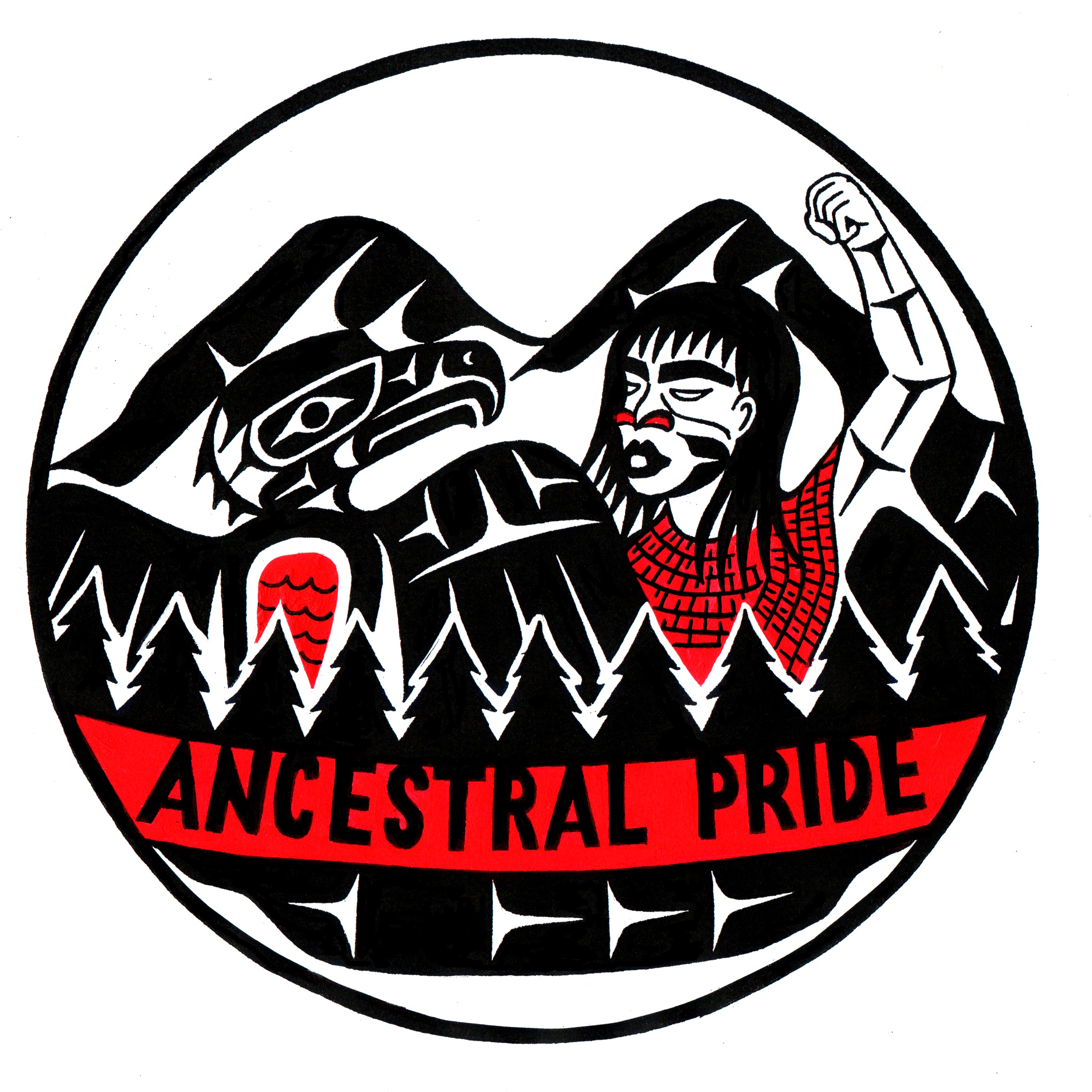








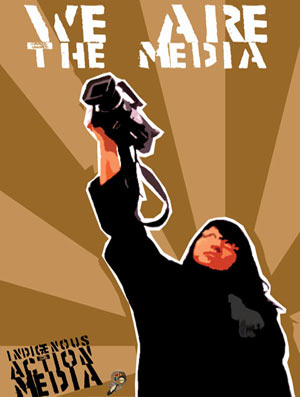













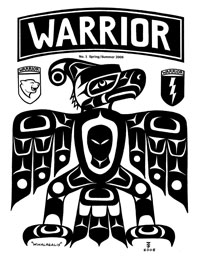


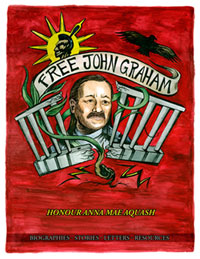



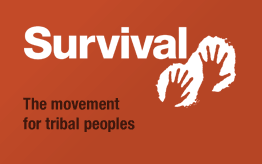


Thank you.
Fascinating… I am lost in Amazonia: Man and Culture in a Counterfeit Paradise and many other texts about the Rainforest as I write my own memoir (Victoria Amazónica) about having spent a year in the Amazon Rainforest and this reads like a synthesis of what I want to say, or better yet, a manifesto, a revelation, a summons to resettle our individual and collective souls, recalibrate our brains and work together to re-store and find the common threads that could allow us to AT-One.